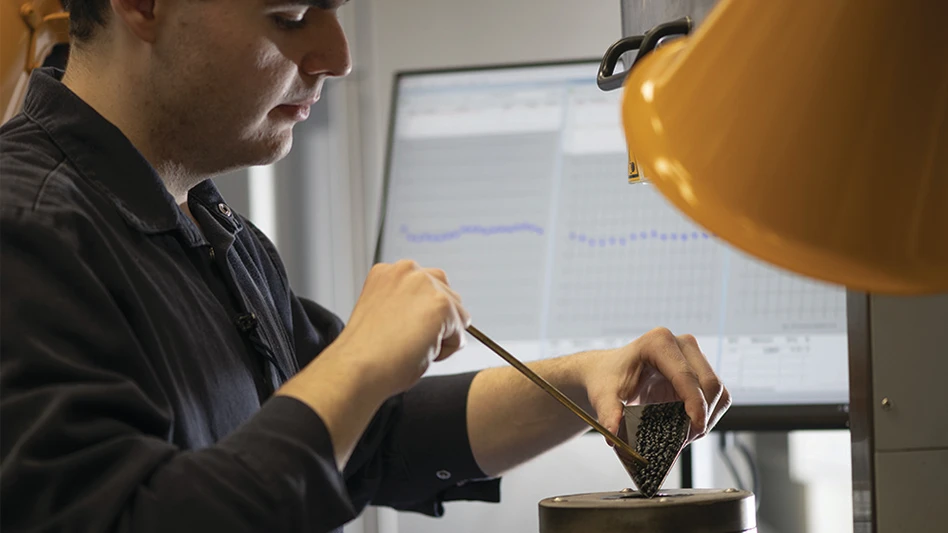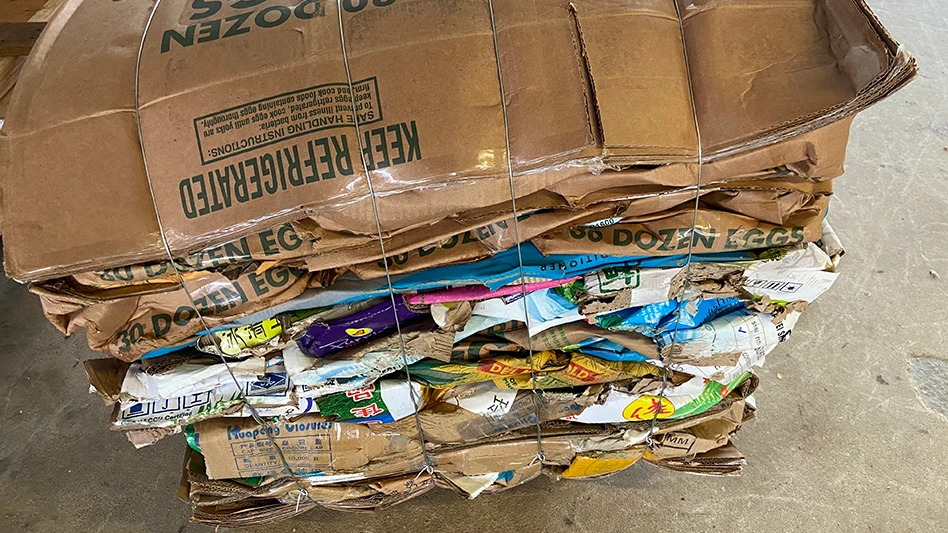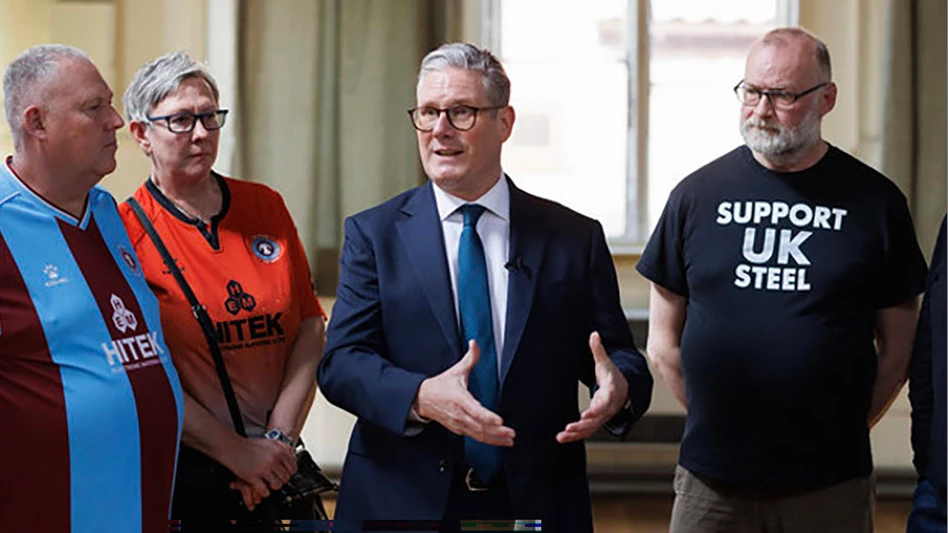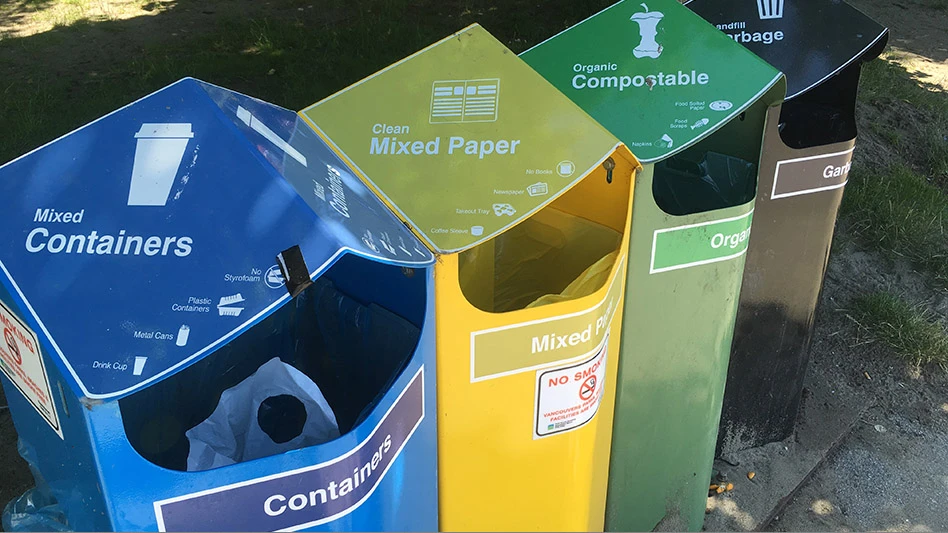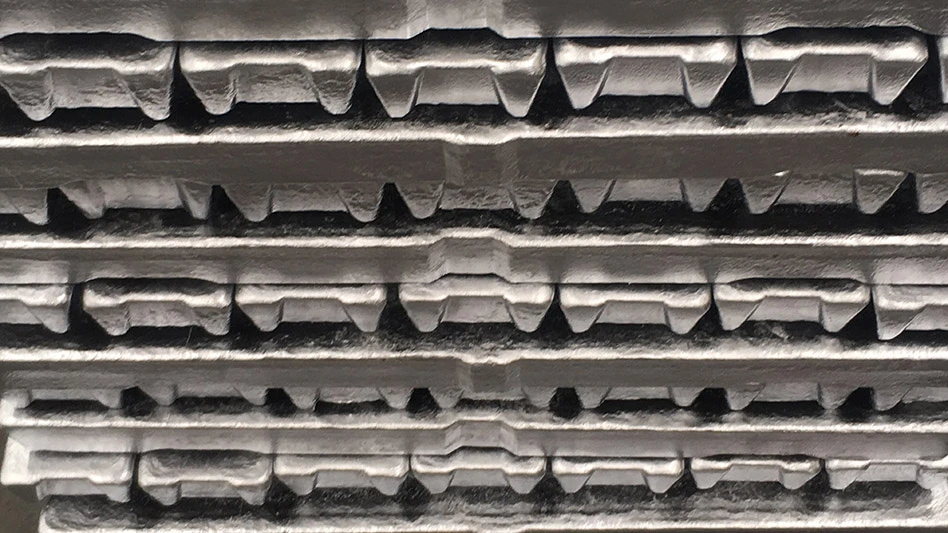
SKfoto | stock.adobe.com
In July 2023, I wrote of the intention to replicate NextLoopp U.K./EU’s success in the Americas. So much has happened since then as we continue to break through some of the most challenging barriers to producing recycled food-grade polypropylene (FGrPP) from postconsumer material, and we can now say with confidence that we are close to launching NextLoopp Americas.
The time is right to share our science-based findings and expertise with U.S. organizations, particularly as there appears to be a scarcity of examples where food-grade recycled resins are used back into food-contact packaging.
Since our report last year, the U.S. Food and Drug Administration (FDA) has given its letter of no objection (LNO) to 14 companies in North America, Asia and Europe to use their recycled resin products in food-contact packaging. Yet, so far, information and publicity on FGrPP resin being used in food-contact packaging has been scarce.
From our perspective, this has to do with the relatively new history of FGrPP, which is just embarking on its recyclability journey. If we consider the most widely recycled polymers to date, polyethylene terephthalate (PET) and high-density polyethylene (HDPE), their recycling journeys were not immediate overnight successes either.
I recall considerable reluctance to using rPET in food-contact packaging when we first produced food-grade rPET in the U.K. It required extensive trials before it was adopted for standard production. Now rPET in food-contact packaging is an everyday occurrence.
Recycled PP is experiencing the same scenario, with brand owners and converters needing experience in the conversion processes and confidence in the consistency of rPP quality.
The new kid on the block
PP accounts for more than 20 percent of global plastics production, and food packaging is one of its primary markets. In the USA, PP is one of the most converted polymers with a market share of about 20 percent according to data from 2018, yet it also is one of the least recycled (3 percent to 5 percent) mainly because of its use in nonbottle packaging, such as cups, tubs and trays, as mainly bottles, which are commonly made of PET and HDPE, that feature in recycling collections.
To understand why FGrPP still hesitates on the sidelines, even when the material has an LNO, we need only check PET’s and HDPE’s tentative first recycling steps. The reticence toward ensuring a new resin’s safety is wholly understandable as it comes from a lack of experience that this material can safely be used in consumer food-contact packaging.
The challenge with rPP is that up until now it has not been possible to accurately differentiate between PP packaging that once contained nonfood products from those that contained food. As a consequence, FGrPP has been limited to closed-loop recycling or to hand sorting rather than automated sorting or advanced recycling technology processes based on mass balance (which is not yet recognized as recycling in the EU).
Characterizing residual contamination in rPP
Progress is rapidly catching up, however, thanks to NextLoopp’s ongoing science-driven exploration to close the loop on postconsumer FGrPP.
Achieving this has meant methodically addressing every roadblock along the way and diving deeply into the specific sorting and decontamination requirements for the processes involved in recycling PP.
This led to NextLoopp’s investigation to determine the residual contamination in postconsumer PP packaging, which up until now, has not been characterized.
The lack of data showing the misuse/misselection rate within PP feedstocks meant was no reliable way was available to define residual levels that potentially could migrate into food or to understand which molecules to target via decontamination processes.
NextLoopp’s study aimed to identify substances that might cause samples of rPP to be outliers from the expected input stream that could represent challenges to the final safety of the recycled plastics. The key issue was to check whether the substances observed potentially could be a significant health concern.
This is a critical criterion for food safety evaluations given that the substances could be derived from the misselection of an item of non-food PP packaging, which is not necessarily a case of misuse.
Packaging shape is key
Despite being olefinic, the format of consumer PP packaging reduces the chances of it being in a consumer-misuse scenario. A large proportion of PET packaging is relatively durable, with a tight closure, making it a container of choice when used for storing hazardous materials. Likewise, HDPE packaging is also in bottle form with a closure, meaning it too could be used in such a scenario. PP food containers, on the other hand, are less likely to come in bottle form and much more likely to be pots, tubs or trays with limited closure capability, making it a less likely candidate for consumer misuse.
Characterizing residues in postconsumer packaging that has been sorted into monopolymer fractions was done by analyzing and testing multiple batches of food and nonfood samples to see what molecules are present and if there are any areas of concern.
To achieve this our team of scientists worked on 20-metric-ton batches of PP bales sourced from a U.K.-based material recovery facility (MRF). Using optical sorters to separate color fractions of natural (clear), white and colored articles, each color fraction was hand-sorted into articles from food applications and articles from nonfood applications.
The analytical study involved 700 tests, representing approximately 17,500 different PP packs based on 25 significantly sized flakes per test. This was estimated to be a cross-sectional representation of 7 percent of the packs from the combination of batches of 260,000 packs.
Following this contamination study, NextLoopp characterized the contamination levels in the PP and concluded they were in the order of 10 times less than what we expected in HDPE milk bottles and 100 times less than expected in PET. This is not surprising given the applications that select PP as the packaging material.
Reaching a turning point
This study marked a turning point in the NextLoopp project, giving us the confidence to use our PPristine FGrPP in food-contact packaging.
The performance standards we have developed will enable us to help organizations reach a high level of technical performance as well as commercial and legal confidence in the food-grade rPP they can include in food-contact packaging.
By deploying NextLoopp’s expertise and technical backup, we aim to license the NextLoopp technology to ensure the resin standards can be fast-tracked into U.S/-produced FGrPP packaging.
Finding validated local solutions for end-of-life postconsumer food-grade PP packaging has been the driving force behind NextLoopp’s participants, who continue to produce and trial a range of unique grades of high-quality FGrPP resins produced using Nextek’s patented PPristine decontamination technology.
Commercial trials provide proof
Eighteen of NextLoopp’s brand and converter participants have now finalized 55 commercialization trials using five PPristine resin grades: natural food-grade IM, natural food-grade, white food-grade, mixed-color food-grade and nonfood grade mixed-color INRT and the results have been outstanding. For example, trials using 30 percent NextLoopp’s PPristine resins in extrusion and thermoforming trays achieved product quality that is comparable with virgin products with no changes in processing conditions.
Sorting developments
Whilst the multiparticipant project finetunes the resin quality standards that are poised to become typical for FGrPP, recent trials conducted by NextLoopp together with Tomra have confirmed a breakthrough in the automatic sorting of food-grade PP packaging.
These sorting trials held in February, which combined Tomra’s near-infrared, visual spectrometry with the company’s latest deep-learning technology GAINnext, achieved food-grade purity levels exceeding 95 percent in packaging applications.
This exciting development is a boost to the NextLoopp project, as GAINnext has the potential to be rolled out to all PP packaging sorting facilities and will help produce valuable FGrPP postconsumer recycling (PCR) streams.
By providing a sorted food-grade PP PCR stream, GAINnext™ will enable the NextLoopp decontamination process to be carried out in many more recycling operations globally.
Breaking the final barriers
After close to four years of intense collaboration, the NextLoopp participants are now breaking down the final barriers to producing food-grade recycled PP from postconsumer packaging into new circular economy products, and the NextLoopp team is looking forward to launching the NextLoopp Americas project to achieve similar results.
Edward Kosior’s expertise in the plastics recycling sector spans more than 40 years, split between time as an academic and working in plastic packaging recycling. He has been instrumental in designing numerous modern recycling plants and has achieved a number of patented recycling breakthroughs. In 2004, Kosior founded U.K.-based Nextek Ltd. to provide consultancy services to assist in the strategic approaches to sustainable packaging, waste reduction and minimal life cycle impact. He is Nextek’s managing director and can be reached at edkosior@nextek.org.
Latest from Recycling Today
- Acerinox names new North American Stainless CEO
- Greenwave closes 2024 books with red ink
- Steel Dynamics nets $217 million on record shipments
- Massive Chinese steelmaking rebound recorded in March
- LME looks into sustainable metal pricing
- OnePlanet Solar Recycling closes $7M seed financing round
- AMCS launches AMCS Platform Spring 2025 update
- Cyclic Materials to build rare earth recycling facility in Mesa, Arizona


